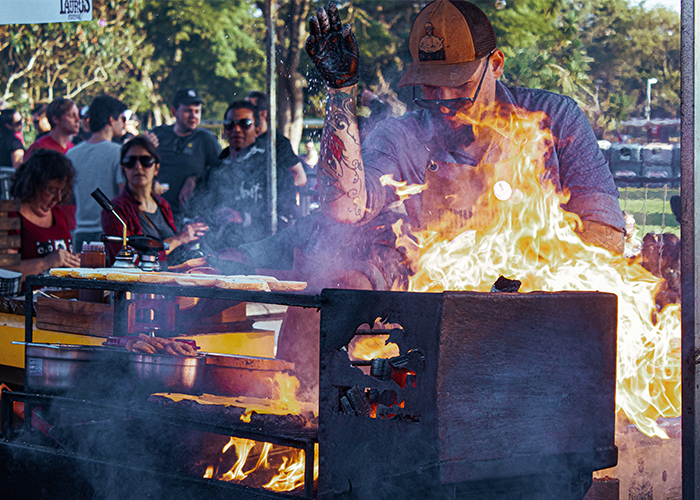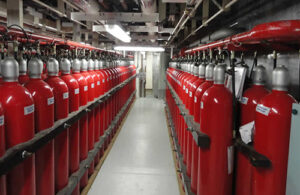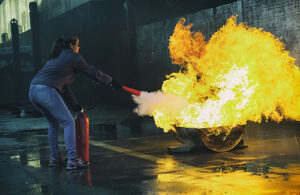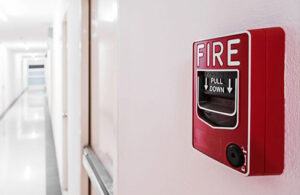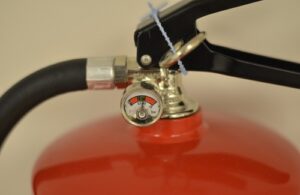The taste of the hot and sizzling BBQ chicken wings is still on the fingers? Food trucks are a foodies’ paradise. You don’t want to turn it into the inferno, right? These fire safety tips will ensure you remain protected so read on!
Introduction
With several people all over the city hurrying to work on distinctly busy mornings, the traditional restaurants and cafes can sometimes prove too expensive to eat at.
With a food revolution, food trucks are the new buzz of the town. Cheap, fast, and tasty, they give you just what you need while you are on the go.
Now, it is only natural that everyone has a concern towards safety issues. And one of the major emergencies is fire concerns. To do that, read on to know how it can be prevented.
Food Truck Fire Safety Risks
Food trucks are your go-to restaurants without the brick shell. However, much else inside a truck is the same as any other traditional eatery. There are several fire risks involved with a fire truck. The frying pans run on open flames, there are extremely hot utensils lying around, 50 kg propane cylinders which can explode with greater than 2.5 million British Thermal Units, not to mention engine oil and grease and spatters that are easily flammable.
Other reasons for food truck fires include the use of propane which is heavier than air and hence starts to pool near the floor if leaking. The leak can also remain undetected at times with the smell of gas already present. Moreover, the use of portable generators without any creation of venting systems can lead to carbon monoxide poisoning and subsequent electrical fires.
Guidelines You Can Implement
Everyone loves food trucks because why not? The food is tasty, cheap and delivered hot and fresh! Also, many people’s livelihood are greatly dependent on it for survival purposes. Therefore, certain guidelines need to be introduced in order to make sure that fire risks can be curtailed to a great extent.
They Are as Follows:
Installation and Maintenance of Fire Prevention Equipment:
Having fire extinguishers on hold in the truck premises is a very crucial step to decrease fire risks. A fire alert system working on carbon monoxide patterning and sprinkler systems installed along with it can also prove to be helpful. The open kitchen area does not need to be included in this system. Extinguishers also need to be of two types and readily available – Class K for putting out cooking fires and ABC extinguishers for other fires.
LP-Gas Maintenance:
LP-Gas or the propane levels need to be checked every month and there needs to be a propane leak detection system inside the truck.
Coverings and Employee Training:
All trucks need to cover the oil vat while in transit so that there is no spillage. Moreover, all employees need to undergo proper fire safety protocol training before starting work and the exhaust has to be inspected everyday for potential grease storage. Cleaning out the oven for dry wood and other flammable materials is also a must. Public Spaces: No truck can create a seating space within the premises. The trucks cannot be present inside a tent or any other enclosed area.
Emergency Services:
Fire emergency service hotlines need to be known and written on the truck so that in case of fire detection, the firefighter community from the fire department can come down as soon as possible.
Tips for Working with LP-Gas Cylinders
LP- Gas Cylinders are the major leakage hazard in food trucks and therefore these need to be checked and maintained accordingly since they can cause high-level blasts.
The Following Are Some Fire Safety Tips for Working with These Cylinders:
Detector: All food trucks need to have a propane detector that is cleared for proper detection of the leaks if any.
Maintenance: This leakage detection system needs to be checked every month and records need to be kept in the truck.
New cylinder: Every time a new cylinder is installed, you have to check for leaks.
Training: At least one employee must know how to close the propane cylinder and call 911, if there is any fear of a fire emergency due to leakage.
Preparing an Evacuation Plan
If the fire prevention system does not work and you find yourself, your employees, and the customers at risk and the fire alarm ringing, then an evacuation plan is a must.
The Following Steps Can Be Taken:
- Employee Control: The employee well versed in fire protection protocol needs to take out the required extinguisher (class K or ABC) and try to put out the fire, while other employees have to take the customers as far away from the truck as possible.
- Helpline: The fire department helpline needs to be called as soon as possible.
- Evacuation: If the truck is near a residential building or public park, people nearby need to be evacuated and moved to a safer distance.
Conclusion
Food trucks are a lovely option for those pocket-friendly munchies. They are very popular now in this coming-of-age food-loving community. Therefore, to keep the buzz and the love alive, you need to make sure nobody gets scarred in the meantime due to a fire emergency hazard that could have been prevented or put out with proper fire safety protocols.

